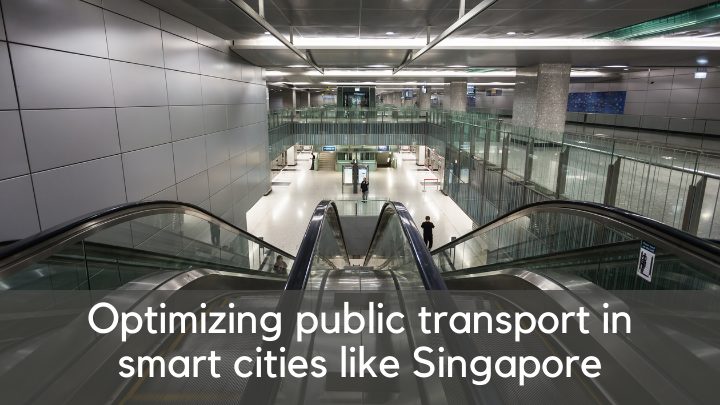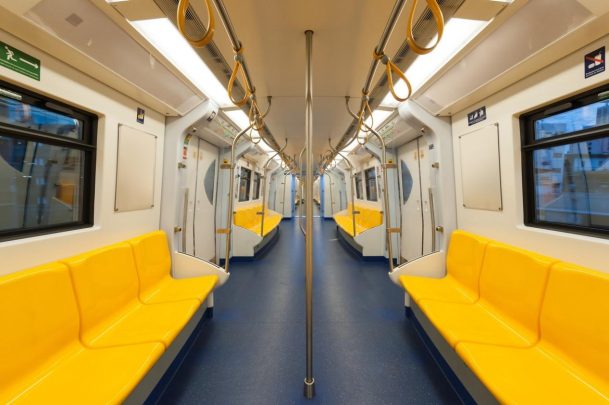
As urbanization rates continuously climb at unprecedented rates, governments across the globe are setting ambitious goals to reduce lessen carbon dioxide emissions and make cities more energy-efficient to limit their environmental impact as possible. Studies show urban cities account for over two-thirds of carbon dioxide emissions globally. Check out the detailed case study regarding how public transport can be boosted in smart cities.
Some countries are addressing this by using technology to handle the challenges caused by urban sustainability. For example, Singapore’s leading public transport service provider, SMRT, has expressed its goal of becoming an environmental stewardship industry leader. The company is being managed by the SMRT Chairman, Seah Moon Ming, who is also vocal about the company’s sustainability efforts.
They are committed to implementing sustainable developments in waste management, water conservation, and energy reduction. Singapore is just one of the few smart cities around the world that take advantage of social responsibility to reduce costs, enhance productivity, and support economic growth.
The trend towards building sustainable, smart cities became possible through the confluence of daily necessity, technological innovation, and government support. But with the rapid rise of urban habitation, these changes will likely affect public services as authorities and business leaders attempt to provide consistent and quality experience for an increasing population.
For citizens, the most distinct area affected by this is the provision of public transport in urban cities. We cannot overlook the worsening impact of transport-related pollution and traffic congestion. This is why smart cities are now directing their efforts in their transportation to address sustainability issues. Know how smart cities can optimize their public transportation with sustainability in mind.
Optimization of public transportation
Planning and addressing transport challenges using a ‘smart city’ strategy depends on gathering and processing massive data volumes. It also includes navigating legacy systems, daily operations, and conflicting goals.
Optimization is vital to effectively manage these complexities since it involves the automation of manual systems. It seeks to maximize efficiencies in terms of storing, prioritizing, and retrieving data. Since data isn’t limited to public transportation networks, it’s important to gain a perspective from other references. These can be from local events, weather, and surrounding towns, which affect the performance of public transport.

Prediction capabilities
Advanced data analytics plays a vital role in replicating changes to assets or networks and evaluating the real-time impacts of these changes. In a smart city, public transport providers can use data from internal and external sources when understanding how the demands in transport infrastructures will change in the years to come.
Predictive analytics tools, such as hospital records, provide a complete view of the potential demands on emergency transport services. At the same time, the census data helps in the understanding of how a given population changes through time. Knowing how to apply these sources to public transportation can make a big difference in the quality of life of the city’s inhabitants.
Comparing potential scenarios is vital to understanding the long-term impact of changes or investments in public transport systems. It will also support planning departments by demonstrating feasible options for emergency planning. Despite insufficient public resources, predictive analytics can help government officials be more responsive and efficient in addressing citizens’ needs.
In the end, the Internet of Things (IoT) and data-driven predictions won’t only improve the results and responsiveness of the government. They can also pave the way for more innovations by eliminating risks related to potential changes to public transport infrastructure.
Mobility
The public transportation sector employs around 13 million employees globally. That includes thriving European cities, such as Berlin, Paris, or Madrid. It’s not easy to manage a large and diverse workforce, especially in the transport sector. That’s why public transport operators need to empower workers and customers by providing the right technologies, support, and maintenance. This will allow everyone to maintain access to essential information when operating public transport vehicles.
At the same time, citizens will benefit from this by having quicker access to delay updates and transport schedules. This can take the form of mobile solutions by becoming a vital tool for daily passengers that greatly rely on public transportation for work, school, and other essential purposes. This can save them more money and time when planning their journeys.
When appropriately implemented, mobile applications will serve as the reflection of the city’s entire public transport system. This will also drive them closer to becoming a smart city, where fewer applications remain tied to desktop computers.
Smart cities are a relatively new concept, which also involves a lot of challenges that require to be resolved to ensure its successful implementation. Singapore has already taken the lead by making significant efforts in virtualizing infrastructures, buildings, and green spaces. Whether your city is just starting on its sustainability journey, keep in mind that a well-planned provision of public transportation is a critical standard of success, which can affect the personal, economic, and environmental aspects of citizens’ lives.
